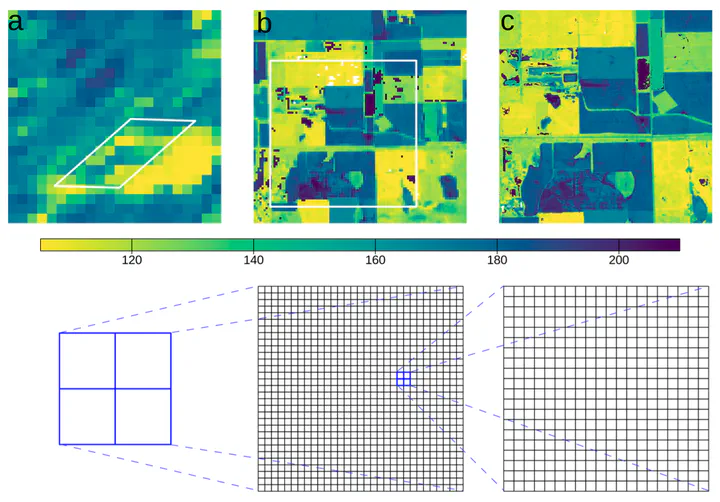Multiscale Analysis of Land Surface Phenology

Here’s a preprint of this study!
Abstract
Land surface phenology (LSP) metrics derived from remote sensing are widely used to monitor vegetation phenology over large areas and to characterize how the growing seasons of terrestrial ecosystems are responding to climate change. Until recently, however, most LSP studies relied on coarse spatial resolution sensors, which makes assigning direct linkages between LSP metrics and ecological processes and properties challenging due to scale mismatches and because substantial variation in phenology and ecological properties are often present at sub-pixel scale in coarse resolution LSP metrics. In this study, we leverage publicly available LSP data products with three orders of magnitude difference in spatial resolution derived from Moderate Resolution Imaging Spectroradiometer (MODIS, 500 m), Landsat and Sentinel-2 (HLS, 30 m), and PlanetScope (3 m) imagery to examine and characterize the nature, magnitude, and sources of the agreement and disagreement in LSP metrics across spatial scales. Our results provide three key conclusions: (1) LSP metrics from three sensors showed consistently high cross-scalar agreement across sites (r2 = 0.70 – 0.97), suggesting that they all effectively capture geographic variation in LSP; (2) within-site cross-scalar agreement between LSP metrics was systematically lower relative to agreement across sites, but mean absolute differences were consistent across and within sites (generally <14 days for day of year-based metrics, with a few exceptions); and (3) local-scale composition and heterogeneity in land cover is a key factor that controls cross-scalar agreement in LSP metrics. In particular, we found that site-level heterogeneity in land cover (measured via entropy) and the proportion of evergreen versus deciduous land cover types explain up to half of site-to-site variance in local-scale cross-scalar agreement in LSP metrics. Results from this study support the internal consistency and quality of the three LSP data products examined, and more generally, provide guidance regarding the choice of spatial resolution for different applications and land cover conditions, and yield new insights related to how LSP observations scale across different sensors and spatial resolutions.